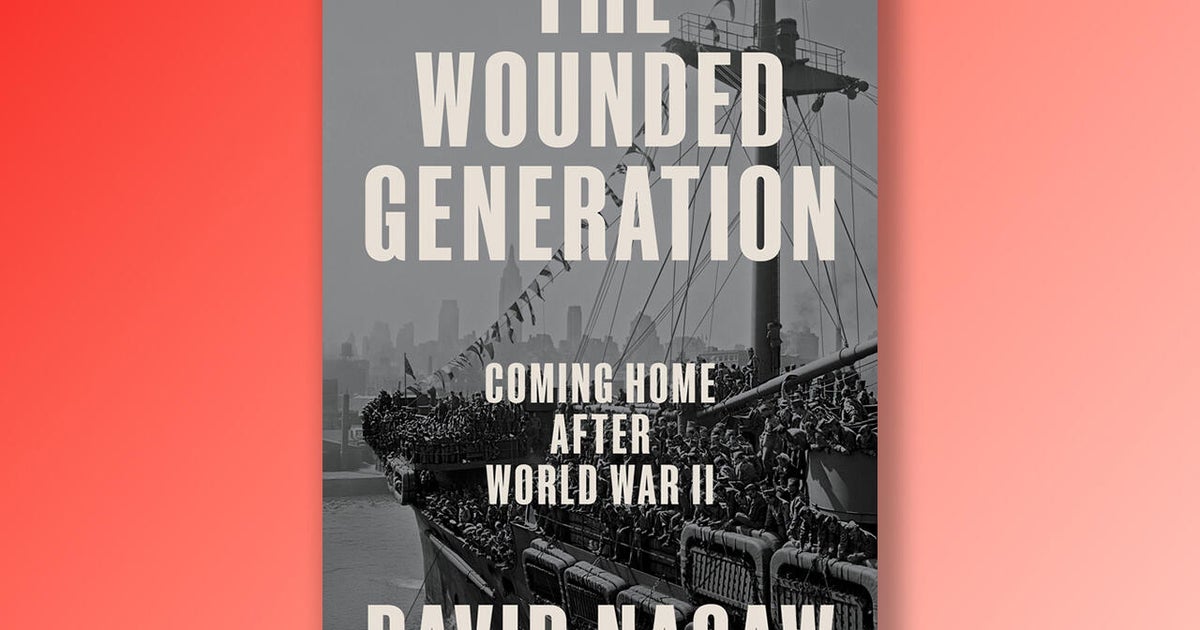Penguin Press
We may receive an affiliate commission from anything you buy from this article.
The veterans who fought and defeated fascism during World War II, and those who supported the war effort on the home front, have been called “The Greatest Generation.” But David Nasaw, professor of history at the City University of New York, says that description may be misleading. His new book, titled “The Wounded Generation” (Penguin Press), examines the invisible psychic wounds experienced by service members that went undiagnosed or ill-treated, as they returned to a nation that had also changed following years of war.
Read an excerpt below, and don’t miss Lesley Stahl’s interview with David Nasaw on “CBS Sunday Morning” November 9!
“The Wounded Generation” by David Nasaw
Prefer to listen? Audible has a 30-day free trial available right now.
Introduction
In its duration, geographical reach, and ferocity, World War II was unprecedented, and the effects on those who fought it and their loved ones at home, immeasurable. The veterans who returned home were not the ones who had left for war. “They are very different now,” wrote the GI cartoonist Bill Mauldin in Up Front, published in June 1945. “Don’t let anybody tell you they aren’t. … Some say the American soldier is the same clean-cut young man who left his home. … They are wrong.”
Most returning veterans found it difficult, if not impossible, to get a full night’s sleep. Many were troubled by recurring nightmares and flashbacks. They were irritable, angry, plagued by uncontrollable rages, feelings of social isolation, and fears of places and events that evoked memories of the war, their proximity to death, and the dead left behind. Large numbers sought relief by drinking to excess, as they had during the war and while awaiting repatriation. Those who sought professional help were told that they suffered from nothing more than battle fatigue that time would cure. It did not. The true cause of their distress, post-traumatic stress disorder (PTSD), would go undiagnosed and untreated for decades to come.
Nearly 16.4 million Americans, 12 percent of the total population, 32 percent of males between eighteen and forty-five, served in the armed forces of the United States in World War II. They left behind four million spouses, two million children, and tens of millions of parents, siblings, lovers, friends, and neighbors. The book that follows is an account of the aftereffects that lived on in the bodies, hearts, and minds of those who fought, those who awaited their return, and the nation that had won the war but had now to readjust to peace.
The war itself lasted nearly four years. The men and women who fought it on two oceans, in the air, and on the landmasses of Africa, Alaska, Asia, Europe, and the islands of the Pacific served an average of thirty-three months, three-quarters of them overseas for sixteen months on average, three times as long as their counterparts in World War I. Never before or since have so many been called away to war — and for so long.
The brutality and carnage of a global war were brought home in graphic reports and visual images in the daily press, the weeklies, Hollywood films, and newsreels. The human costs were made manifest with the arrival stateside of troopships bearing cargoes of servicemen of no further use to the military. In 1943 alone, more than one million were sent home, half of them with disability discharges. The overall numbers were alarming, but more so the percentage of those disabled and discharged — 40 percent for the army — with “neuropsychiatric defects.”
Why had so many hale and hearty young men broken down? In 1948, three years after the cessation of hostilities, Dr. William Menninger, chief consultant in neuropsychiatry to the army surgeon general, explained that the higher incidence of psychological breakdowns in World War II as compared with World War I was due in large part to the fact that the second world war was “a ‘tougher’ one as nearly three times as long; it was fought on a rapidly moving and shifting basis instead of on fixed lines; it required many amphibious landings; it was fought in every extreme of climate; the lethal devices were far more devastating and nerve-racking than ever before; and more men were kept away from home for longer periods.”
There was a great deal of truth in Menninger’s analysis, but his explanation brought neither solace nor relief to those who returned home with PTSD symptoms that could not be treated because they were not understood — by the veterans, their families, and the doctors and psychiatrists from whom they sought help.
The nation to which the veterans returned was not the one they had left behind. There were shortages of every conceivable consumer item: white shirts and men’s suits; meat and maple syrup; beef, bread, and barley; cars, used and new; and, most critically, affordable housing. What was most troubling was the lingering, inescapable fear that a return to economic depression was just around the corner, that the layoff of millions of war workers and the discharge of millions more servicemen would lead to massive unemployment.
Excerpt from “The Wounded Generation: Coming Home after World War II” by David Nasaw. Copyright © 2025 David Nasaw. Reprinted with permission from Penguin Press, an imprint of Penguin Random House.
Get the book here:
“The Wounded Generation” by David Nasaw
Buy locally from Bookshop.org
For more info:

